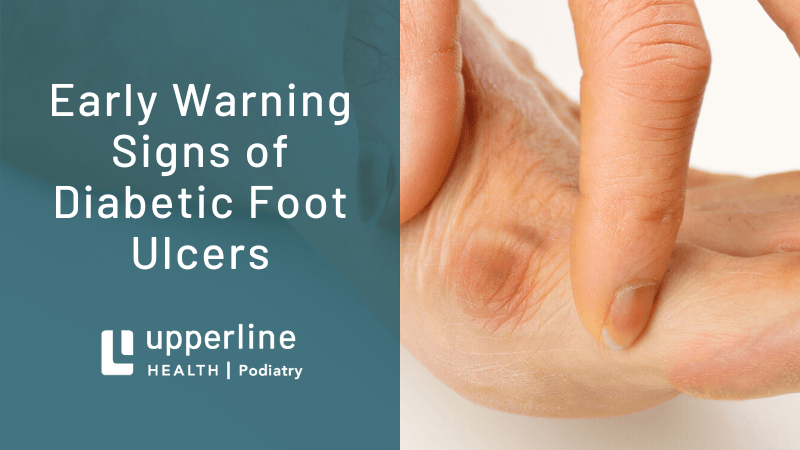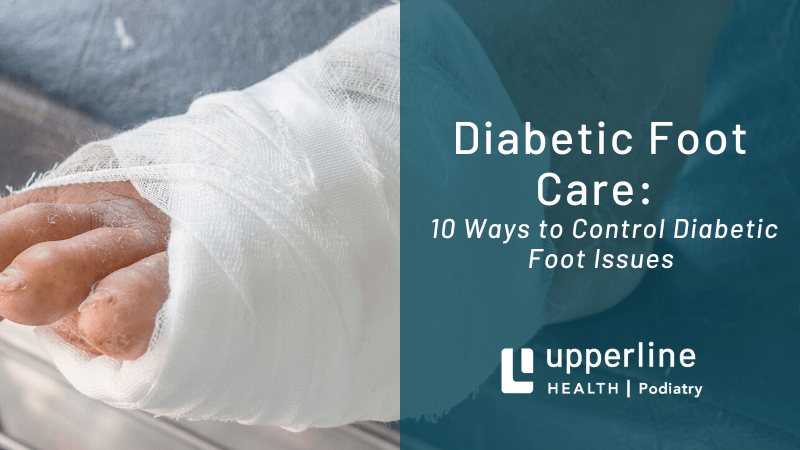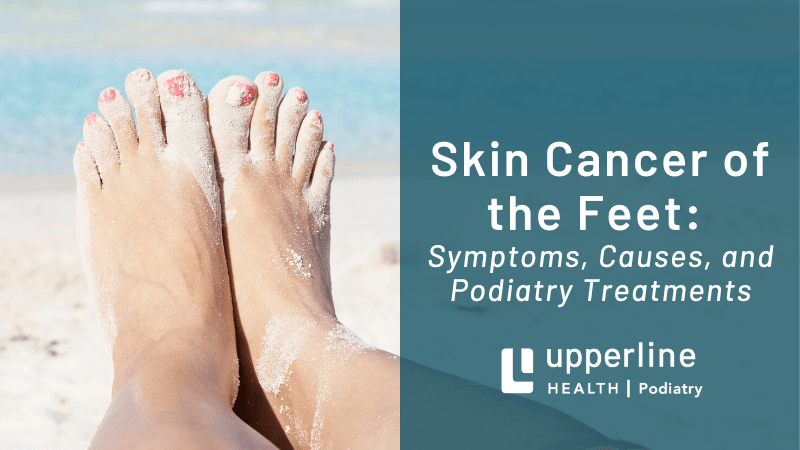Dr. Michael King Featured on Elevator Podiatrist Podcast Episode 1
June 13, 2019
1. Elevator Podiatrist - Summer Heel Pain - Dr. Michael King
Dr. Michael King, medical director of Alabama Podiatry, was featured on the Elevator Podiatrist podcast and offered insight into summer heel pain, plantar fasciitis and heel spurs. We also debunk the myth of vinegar as a cure for toenail fungus
Listen to the podcast:
Q&A Transcript:
Joe Crosby (JC): Welcome to the Elevator Podiatrist, the show where we ask common foot and ankle questions to top podiatrists from around the country. There’s no appointment or co-pay required for this one-on-one Q&A, only free advice from individuals who have devoted their lives to all things feet. I’m your host Joe Crosby and today I’ll be speaking with Dr. Michael King, podiatrist and medical director at Upperline Health in Nashville, Tennessee.
Dr. Michael King (MK): Sure Joe, thanks. I practiced for 32 years, private practice as a podiatric physician and surgeon. I spent 28 years outside of Boston, Massachusetts, 2 years in Atlanta, and 2 years actually in New Jersey in the public health service. I’ve been board certified for 32 years now, and recertified every 10 years. I was the president of the Massachusetts Podiatric Medical Society for the APMA, which is the American Podiatric Medical Society or Association Region 1 and then I was the National APMA president in 2011. So that’s kind of been up my career. Most of it’s been spent in not only clinical medicine but in the coding and compliance world as a Medicare auditor for 20 years and a member of the AMA CPT editorial panel for 10 years.
JC: Today we’re talking about something a little more common, and it’s probably one of the most common things that a podiatrist will see or someone will go into a podiatrist for, and that’s heel pain. As we come into the summer months, looking at how many people seem to be coming into the office more often for heel pain, so let’s talk through some of the reasons why that might be.
MK: Most of my colleagues would hate this answer, but they would agree with it: flip flops. I think that we’re in a society now of wearing good shoes, good support, running sneakers, Sketchers, you put the label on them that you want to put on them. Most of them are designed with an elevated heel, with padding, with an arch support, with a nice toe box, etc. etc. And then what do we do after spending the whole winter in those shoes, especially here in Nashville where we don’t have to wear a whole lot of winter boot things, but in the northeast I saw a lot of it. Well that’s the first thing they do in the northeast: the guys go into boat shoes, the women go into flip flips. So what you’ve done in essence is remove your eyeglasses, so all of a sudden your feet are not seeing the ground very well and they give you a headache. And so heel pain and foot pain in general increases. And activity in the springtime and summers and those things will bring that up too, but we change our whole pattern of the way we live, but I think the shoe gear and the changes in our pattern have the most to do with why we see those changes.
Activity probably plays as much of a role as the shoes do. There are plenty of people with great arches and great feet, and I’m not poopooing flip flops; if you have great feet and you can wear them, I have not problem with them.
JC: Why do my heels hurt so bad in the morning when I wake up?
MK: When people ask me that in the office, that lead me into my little diatribe...let me give you a scenario. “I get out of bed in the morning and my feet are killing me. I feel like I stepped on a knife; somebody ripped my heel open. I go pee, I brush my teeth, I go turn the shower on and all of a sudden I’m feeling a little bit better. It’s like, hey I’m doing okay. It’s sore but I’m okay. Then I walk around and get ready for work. I have my coffee. I drive in. I get out of the car and it starts all over again. It’s crazy, why does that happen.” It’s called post-static dyskinesia and what that means is that when one is at rest, the arch, which has been overtaxed, and the arch of your feet on the bottom of the foot is called the plantar fascia. It’s a big, thick, dense, ligamentous type of material sort of like a really grizzly celery. When that’s been overextended, it begins to get tears, and those tears are microscopic and cumulative, so cumulatively they lead to increasing pain. When one rests, those micro-tears begin recuperating and healing, and the arch becomes shorter. When one gets out of bed unsupported, the first thing they do is re-tear all of the things they just healed. The longer you’re in a period of inactivity, the more healing, and usually the more pain to get started, so if you get out of your car an hour and a half after you get up, you’re probably going to get a little less pain than what you got at 6:30 in the morning when you got up, so for example, to go to the next part of that, the first thing I told my patients to do was put your shoes next to your bed so before you touch the ground in the morning, you don’t let the plantar fascia become maximally extended and re-tear what you just healed in bed all night, and it was amazing the difference. I reduced medications and injections by almost 40% with that one trick.
JC: You mentioned the plantar fascia. What exactly is plantar fasciitis? Is that just a general medical term for heel pain?
MK: One of the most famous articles that every podiatry student reads at the beginning of their careers in clinical medicine is the 101 Causes of Heel Pain because there are well over a hundred causes of heel pain. But the other thing in medicine is when you hear the sound of hoof prints, look for horses not zebras, and the horse of heel pain is plantar fasciitis. As we mentioned earlier, the plantar fascia is the dense ligament on the bottom of the foot. Plantar means bottom, dorsal is top; so just like the dorsal fin on a fish or a shark. So the plantar in the foot is the bottom. When the fascia has those cumulative microscopic tears, the body tries to heal it. How does it do that? Through inflammation. And when you see -itis at the end of something, that stands for inflammation, so plantar fascia -itis is what plantar fasciitis is. So, yes, the most common cause of heel pain is plantar fasciitis. There are bumps in the back of the heel and shoe issues and there are achilles issues and nerve entrapments and things like that, but for the most part, 9.5 of the 10 people who come in your office who say they have heel pain have plantar fasciitis.
JC: Is that something that’s going to go away on its own? If I am diagnosed with plantar fasciitis, am I needing treatment? Is it progressive? What’s the treatment plan?
MK: There are lots of patterns to it, Joe, and there are people where it will go away. If they’re tolerant enough, crazy enough, diligent enough, whatever you want to say, to let it subside. Obviously I would be more biased in that I don’t see those. They’re not going to come and visit me in the office; I see the ones who are not. So my answer to that would be is that if you have pain that is of that nature in your heel and it persists more than a few days you should have someone make an evaluation of it. If you want to look on Google, and Dr. Google is my greatest competitor today, if you want to look on Dr. Google and see what suggestions are there. There are some good ones such as stretching and changing your shoes and not walking barefoot and maybe even buying an over-the-counter type of arch support, and you might do fine. And if you do those things, most of us would say no problem. You’re never doing any harm which is always the first rule of medicine. But if those things don’t do anything for you, you need professional assistance, and so then it needs to be treated and there are a plethora of treatments that exist for plantar fasciitis.
JC: What would the main categories of treatment?
MK: So typically it begins with changing activities, and that doesn’t mean you have to stop running or you have to stop certain things. You may need to adjust those schedule a bit. Don’t walk barefoot. That was the first big one I mentioned earlier. Frequently they will respond to either oral anti-inflammatory agents, injection therapy - yes needles hurt, but they’re very effective for plantar fasciitis because the cortisone that’s used. Let me dispel a long term myth: cortisone in a single injection will not rupture your tendons. The people who use super high dosages of it and too many times damages tissue. If it’s used appropriately, it’s a wonder drug. If it’s used inappropriately like anything else, it’s not healthy. So don’t let Dr. Google convince you you should never have a cortisone injection. I give myself injections of cortisone when my allergies are bad just to give you an idea. But cortisone injections are very effective. The next key element is adjusting the support system; that’s where the “eyeglasses” come in, and that’s where using a custom-made orthotic device that’s fabricated by your podiatrist can help. Once you get the inflammation under control, that’s working on the egg, then you want to work on the chicken, and that’s working on the support side of it. If you get rid of both, then you’re not going to have these recurrences constantly coming back. Night splints, which help stretch the calves can be very helpful. Stretching exercises when done appropriately. Occasionally physical therapy and once in a blue moon, surgical intervention for the plantar fasciitis. I saw 14 to 17 heel pains a day in my practicing 40 patients a day, and I would typically do about 3 or 4 heel surgeries in a year, so that gives you a pretty good idea that it’s rarely needed. Very effective, 100% effective in my hands at least. I never re-did a heel surgery for fasciitis, but I didn’t have to do that many.
JC: So one of the most self-diagnosed issues is a heel spur. “My heel hurts; I think I have a heel spur.” First off, what is a heel spur, and why is this always the first thing people go to as a self diagnosis?
MK: Heel spurs have been synonymous with plantar fasciitis. But they’re not. Plantar heel spurs, or spurs on the bottom of the heel, have been scientifically proven through evidence-based medicine to not be the source of the pain. I bet you could pull 100 podiatrists and 97 to 99 of them will say the same thing I just said. One person will say that the heel spur is always the problem, and no one has proven that. Now, if someone had a broken off piece of heel or something like that, different story. Spurs in the back of the heel are a problem. That’s when you have an osseous or a bone problem, because spurs in the back of the heel can go into the achilles tendon, they rub against the shoe, etc. Spurs in the bottom of the heel are oftentimes found incidentally. I had many people sent to me and I would say “are you having a lot of heel pain.” “Well no, my heel doesn’t hurt. They told me I had to come see you because I have a heel spur.” “I said, well your heel doesn’t hurt.” And they said “Well I sprained my ankle and they said I have a heel spur.” The point of that story is that many of these are found incidentally. I could operate on you tomorrow, Joe, with fasciitis, leave a half an inch spur in your heel, and the pain would still be gone. So heel spurs are just the older terminology and it’s still something grandma told us and dad told us and it’s like “oh, I must have a heel spur.” You would be amazed at how many hours, weeks, months I spent trying to convince patients it was not a bone problem. Example: a bunion is a bone problem. Basically you either change your shoes, you live with it or you operate on it. And if that was the case, I’d be operating on 17 patients a day for heel pain. So it’s rarely the problem, but it is synonymous with fasciitis, but it’s really a soft tissue problem, not an osseous or a bone problem.
JC: To sum up the discussion on heel pain in general, what are some of the top ways people can avoid heel pain this summer. ?
MK: Well the biggest thing of all is making sure you’re wearing supportive shoes. It doesn’t mean they have to be super expensive, they don’t have to be super fancy. They need to be well fitted. They should have a little bit of a heel, at least an inch high of a heel and some support. Flip flops are fine, but I tell my patients get a pair of Tevas, get a nice pair of flip flops, get a pair of Reefs or Chacos. Get a good one. But you need a little bit of a heel, a little bit of support, a little bit of an arch and be well fitted. If you’re going to increase an activity, use sport-specific shoes. If you want to play tennis, buy tennis shoes. If you want to go play hoops all the time, get some basketball shoes. If you want to go run, don’t run in aerobic sneakers, run in running shoes. Again, they don’t have to be $140 a pair, but they need to be sport specific. And it’s just some of those little changes that can help people avoid these sort of things. It doesn’t mean you can’t walk barefoot on the beach, but if you get fasciitis, you’re not going to be walking barefoot on the beach. But if you’re wise about those sort of things, chances are you have a good chance of avoiding the problem in the first place. There’s a lot of it that’s epidemiological, it’s natural, I think it’s interesting it’s practically an epidemic in this country now, and all of us scratch our heads as to why, and I think it just has to do with shoe gear and activity.
JC: Soaking your feet in vinegar is a cure for toenail fungus, myth or fact?
MK: Maybe...I would say myth. Onychomycosis, or nail fungus, is one of the most enigmatic problems that podiatrists face today. It’s rarely dangerous. It’s very difficult to eradicate. And have I seen patients soak their feet in vinegar and eliminate it? Yes. Have I seen patients soak their feet (and please, please don’t do this) in kerosene and get rid of it. Yes. Have I seen people use Vicks Vaporub? Have I seen them use cider? Yes. That’s the enigma of it. I can count on my hands how many times I’ve seen it, between my 10 fingers. I couldn’t take all the hands in Nashville to count all the ones that didn’t respond to it. So if you want to try that, no problem. First rule of medicine: do no harm. Knock yourself out. That’s okay. Not kerosene, not kerosene, not kerosene. That was a Portuguese thing in New England. They loved to soak their feet in kerosene. And I’ve seen too many people lose their skin from soaking their feet in kerosene. I had a guy who soaked his feet in isopropyl alcohol every night. His skin was parched like an arid desert. I couldn’t get him to stop because he was killing all the bacteria, but what he was also doing was creating fissures and cracks and holes in his feet that I couldn’t heal. So to answer the question, if you want to try this, that’s fine. Typically it requires more things such as over-the counter antifungal medications, prescription antifungal medications, prescription oral antifungal medications, laser therapy and occasionally surgical intervention if they’re really symptomatic, painful or frequently infected. It is not easy to get rid of. My podiatric dermatology colleagues will hate me for saying this, but I would say that if 30% of them go away, you’ve done a really good job. But can you make people comfortable and manage the disease? Yes. And that’s what you do with much safer modalities that your podiatrist can easily help you find some options and easily explain it to you any time.




